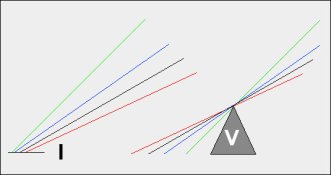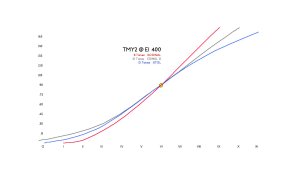Ian: Good stuff. Peter left us far too soon.
Technique doesn't conflict with itself. Curve shaping by dilution has been the preferred way for most sophisticated photographers since the mid '60s. It has its limits, however, and by considering the use of time and agitation, we multiply the potential of the technique.
Increasing the speed of the toe is always related to the time spent in the developer. It defies the way we have come to think about film, however, for we are pretty well indoctrinated to the"dog wagging his tail" image of a curve family. BUT if we allow ourselves to think of a different model, we open ourselves up to perceiving new ways to build negatives. See: Lorenz. New Zone System Manual.
The familiar notation of exposure and development is, of course, N-2, N, and N+2. Small adjustments are needed to maintain the Zone I or Zone II densities, while development alone raises and lowers the Zone VIII.
Lorenz suggested a simultaneous adjustment: Exp +2/N-2; Exp -2/N+2. This allows the midtone to maintain its density, while Zone II and Zone VIII are adjusted. If the Exposure Index is taken from Zone V, or Zone VI, then the speed of the film is constant while the scale is expanded or contracted.
Adding the tone curve shaping is a useful refinement to the process. I use 1 film for all my work, TMY2.
Using agitation and time (and, yes, dilution) I have 3 developments to choose from, a 10 step scale, and 8 step scale, and a 12 step scale. The important thing for me is that the the palettes have the same Exposure Index. So, I only need to make an incident reading, and begin shooting. Development can be decided beforehand or afterward, to satisfy either emotional or technical requirements of the image.
For instance, if the light is good, but there are unavoidable bright highlights on the face, I use an XTOL curve (second graph below) whose shoulder compresses the bright highlights.
If the light is normal, which for me is slightly flat and soft, with no direct light on the faces, I use the 10 tone, normal curve; Edwal 12.
If the light is completely overcast and flat, I use Rodinal to build an 8 tone scale.
By using this method of tone curve shaping, I was able to maintain an EI of 400 while devising 3 suitable tone curves. It has been a reliable method for me, letting me make quick decision while photographing people. It works equally well for 4x5 and 35 mm, because there is only one film.
Rodinal is the focus of this conversation, but XTOL, Pyrocat, Edwal 12 and other developers work well, too. For portraiture, I use 3 development schemes, and 3 different developers to make 3 coordinated palettes.
We've now gone beyond the planned scope of this article, but Ian brought an excellent point.
.












